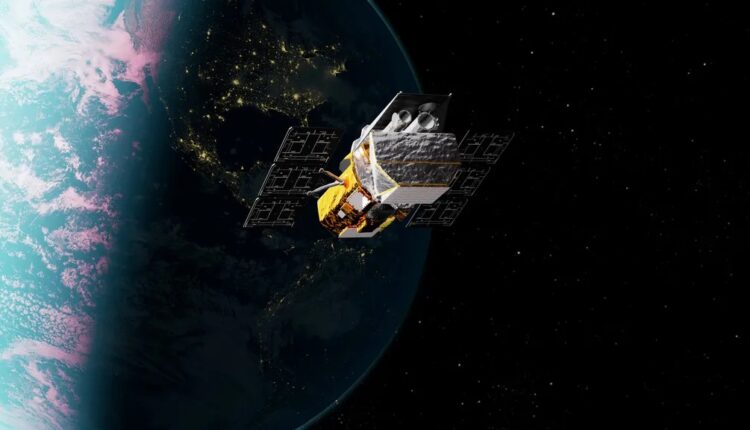NASA has selected Arizona-based Katalyst Space Technologies for a critical mission to save a valuable orbiting space telescope from destruction. The space agency awarded the startup $30 million to conduct a rescue operation for the Neil Gehrels Swift Observatory, which faces the threat of burning up in Earth’s atmosphere by late 2026.
Aging Observatory Faces Atmospheric Destruction
The Swift Observatory, launched in 2004, has been conducting important astronomical research for over two decades. Positioned 585 kilometers above Earth in low-Earth orbit, this $500 million spacecraft has made significant contributions to our understanding of distant galaxies and black holes. However, the observatory now faces a serious problem that threatens its continued operation.
Natural atmospheric drag has been gradually pulling the spacecraft closer to Earth, causing its orbit to decay over time. Without any onboard propulsion system to maintain its altitude, the Swift Observatory has a 90% probability of burning up during atmospheric reentry by the end of 2026, according to NASA scientists.
The spacecraft was not originally designed with servicing capabilities in mind. It lacks traditional docking mechanisms or attachment points that would typically allow other spacecraft to connect with it safely.
Innovative Docking Technology for Unserviceable Satellites
Katalyst Space Technologies will use a modified version of its Link spacecraft to reach the struggling observatory. Company CEO Ghonhee Lee explained that this mission will demonstrate the ability to service satellites that were never intended for such operations.
The rescue spacecraft will employ a specially designed robotic mechanism to grip small metal flanges on the Swift Observatory. These flanges were originally used decades ago to secure the telescope during ground transportation before its launch.
“We’re going for an unprepared satellite that wasn’t designed to be serviced,” Lee stated. The mission aims to prove that any satellite can receive assistance, regardless of whether it has standard docking equipment.
Katalyst plans to begin modifying their spacecraft this month, with the rescue launch scheduled for May 2026. The company will use a craft that was initially planned for an internal demonstration mission.
Space Technology Competition Between Nations
This NASA space observatory rescue mission represents more than just satellite maintenance. The project showcases advanced orbital maneuvering capabilities that have become central to international space competition, particularly between the United States and China.
China recently demonstrated concerning satellite capabilities, including tests where one satellite grabbed and moved another into a different orbit. These demonstrations have raised alarms among U.S. officials about potential threats to American spacecraft.
The Pentagon will closely monitor the Katalyst mission, as CEO Lee hopes to collaborate with U.S. Space Command for additional orbital maneuvering tests after the Swift Observatory boost operation.
Katalyst’s space services capabilities stem from their April acquisition of Colorado-based Atomos Space. The company has invested $25 million in developing the Link spacecraft technology, targeting production costs significantly lower than traditional satellites that often cost hundreds of millions of dollars.
The mission schedule calls for spacecraft modifications to begin immediately, with the rescue launch planned for May 2026. Success would demonstrate crucial technology for future satellite servicing operations and space security applications.


